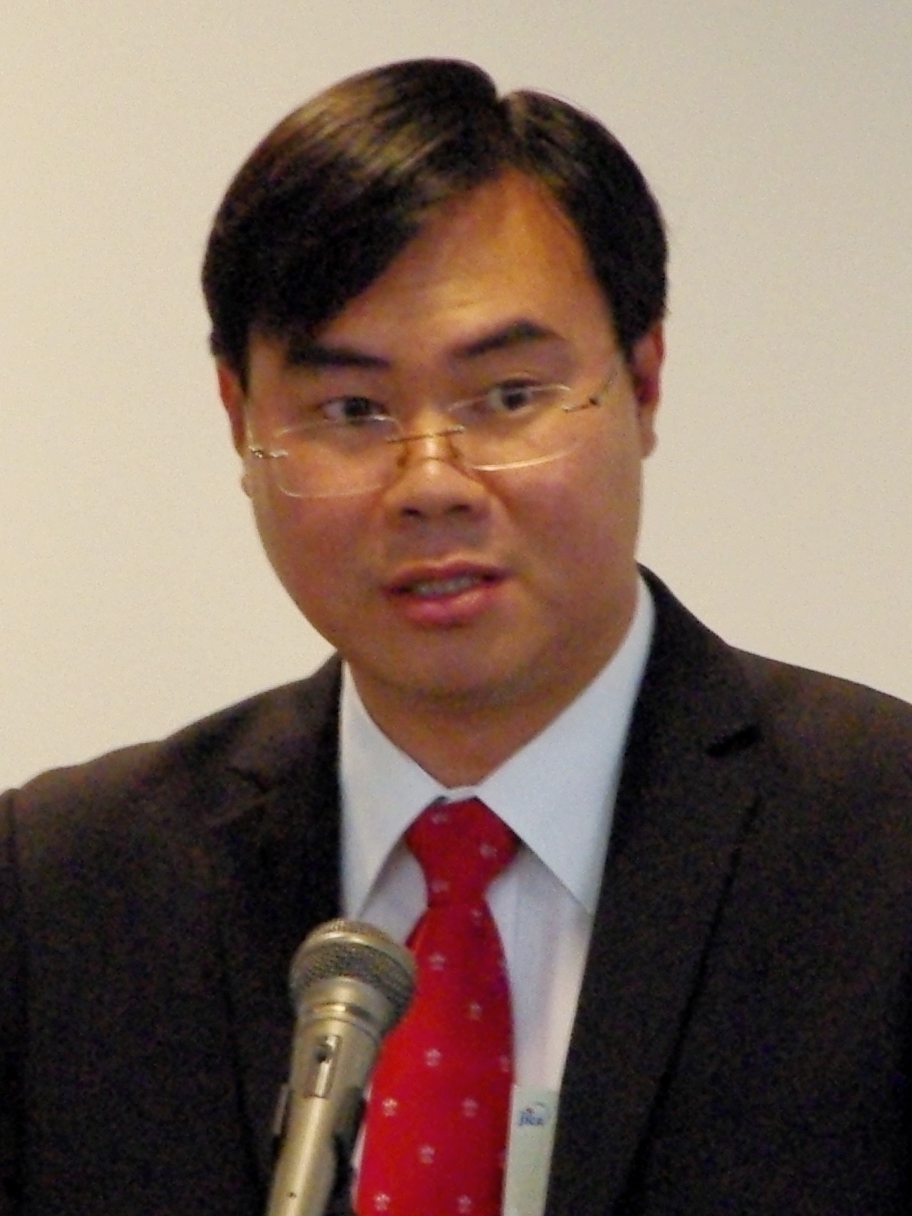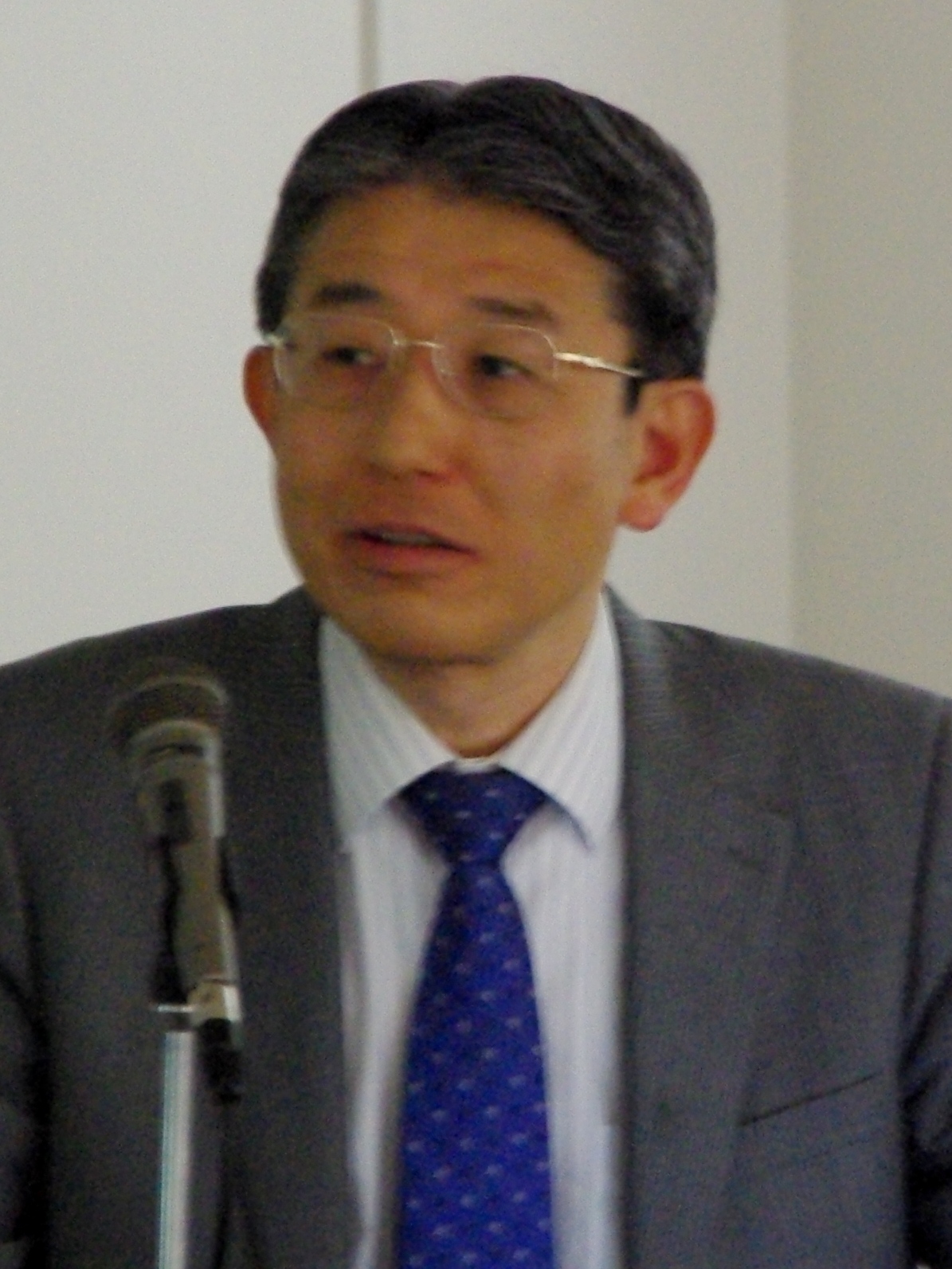Discussion on Monetary Policy in Cambodia: Historical Factors of Dollarization and Promotion of National Currency
2014.06.09
On June 2, JICA-RI and the National Bank of Cambodia (NBC) co-hosted a public seminar entitled “Cambodia’s Monetary Policy: Dollarization, Managing National Currency Supply and Exchange Rate Stability” at JICA Ichigaya.

Dr.Khou
JICA-RI has launched the research project “The Empirical Study on the Promotion of Home Currency in Cambodia” in collaboration with the researchers of NBC and other institutions in order to reveal the underlying reasons for the dollarization and elicit effective policies towards promotion of usage of Riel, official national currency. In the course of the project, JICA-RI invited the researchers from NBC to discuss: why the US dollar is widely used and held as the main currency in Cambodia; and what policy measures should be taken to promote the home currency while maintaining the stability of the macro- economy.
Dr. Khou Vouthy, Director of Economic Research and International Cooperation Department of NBC, gave a presentation on the theme of “Cambodia’s Monetary Policy: Dollarization, Managing National Currency Supply and Exchange Rate Stability.”
First, Dr. Khou introduced several indicators that represent Cambodia’s stable economy—continuously growing GDP per capita, an annual average economic growth rate of 8%, the inflation rate being kept at a low level, and the stable exchange rate. Despite her relatively stable macroeconomic environment, Cambodia has experienced dollarization for the last decades. He explained the historical background as follows: The civil war started in the early 1970s, which followed by the Khmer Rouge regime from 1975 to 1980, where the currency and banking systems were entirely abolished; When the civil war ended in 1980, the home currency was reintroduced but was not widely accepted as people had lost confidence in the currency; From 1991 to 1992, large quantities of US dollars were brought into Cambodia from overseas, particularly through activities of the United Nations Transitional Authority in Cambodia. As a result, US dollars started to be used in various economic transactions in the country. Dr. Khou introduced a survey result on the currencies in circulation in Cambodia that he had conducted in 2010. He explained that an extreme dollarization has been prevalent in the urban areas including Phnom Penh and tourist sites as well as in sectors such as garment industry, tourism, and NGOs. On the contrary, economic transactions based on Riel have been widespread in local areas and in sectors such as agriculture, construction and the public sector.
In promoting de-dollarization, Dr. Khou stressed that the process should be gradual and market-based. He listed the advantages of dollarization—stabilization in macro-economy and reduction in the risk of currency devaluation. He at the same time pointed out that there exist potential risks—undermining efficacy of monetary policy and the trade loss due to the high US dollar. He emphasized the importance of advancing balanced monetary policy on de-dollarization. Finally, Dr. Khou touched on the collaborative research with JICA-RI that it is valuable for the Cambodian government and NBC to deepen the understanding the factors of dollarization and to implement effective policies to promote the home currency.

Prof. Okuda
In response to Dr. Khou’s presentation, Professor Hidenobu Okuda of Hitotsubashi University, a member of the collaborative project, commented on the important factors in effective de-dollarization: the stabilization of the exchange rate; a gradual shift in de-dollarization; and rebuilding confidence in the national currency.
Khou Vouthy
Director of the Economic Research and International Cooperation (ERIC), National Bank of Cambodia

事業事前評価表(地球規模課題対応国際科学技術協力(SATREPS)).国際協力機構 地球環境部 . 防災第一チーム. 1.案件名.国 名: フィリピン共和国.

事業事前評価表(地球規模課題対応国際科学技術協力(SATREPS)).国際協力機構 地球環境部 . 防災第一チーム. 1.案件名.国 名: フィリピン共和国.

事業事前評価表(地球規模課題対応国際科学技術協力(SATREPS)).国際協力機構 地球環境部 . 防災第一チーム. 1.案件名.国 名: フィリピン共和国.

事業事前評価表(地球規模課題対応国際科学技術協力(SATREPS)).国際協力機構 地球環境部 . 防災第一チーム. 1.案件名.国 名: フィリピン共和国.

事業事前評価表(地球規模課題対応国際科学技術協力(SATREPS)).国際協力機構 地球環境部 . 防災第一チーム. 1.案件名.国 名: フィリピン共和国.
scroll